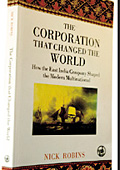 |
B2B BRAND MANAGEMENT
By Philip Kotler and Waldemar
Pfoertsch
Springer
Pp: 357
Price: Rs 2,524 |
When
it comes to marketing, there's no name bigger than Philip Kotler.
The Kellogg School professor has a formidable reputation, built
on the fact that an entire generation of marketers has grown up
reading his books on the subject at various B-schools. So, is
it possible that Kotler still has something to say about marketing
that he already hasn't? It turns out, he has. In this book, co-authored
with Germany's Pforzheim University professor, Waldemar Pfoertsch,
Kotler makes a case for brand management in business-to-business
(B2B) marketing as well. Those who've read Kotler's textbook Marketing
Management will recall that his revisions over the year have included
B2B marketing, but this is his first book devoted entirely to
the topic.
The core proposition in the book is that
in the new globalised world "being known" rather than
"being one of many" is the need of the hour. "Customers
for everything from specialty steel to software now face an overwhelming
number of potential suppliers. Too many to know them all, let
alone to check them out thoroughly..." The authors say that
companies that once measured their worth in terms of tangibles
such as factories, inventory and cash have to revise their point
of view and embrace branding.
How does branding help in overcoming these
challenges? The authors offer a huge list-it helps with differentiation
(and, hence, premium) in product categories that are highly undifferentiated;
creates brand loyalty, as it helps companies transition from a
transaction-based selling model to one that is relationship-based;
and assures future business. And all this, ultimately, leads to
increased sales. There are enough examples in the b2c space of
companies with strong brands benefitting not only from higher
margins but also from higher sales volumes. Toyota, Nokia, Starbucks
and Nike are just some of them. But there aren't too many examples
that come to mind from the B2B space. Sure, there are marketers
like Intel, GE, and Caterpillar that realised the advantages of
B2B branding early on in their lives. For most other B2B marketers,
though, branding is a superfluous exercise. After all, the argument
goes, the business buyer is much more sophisticated than the retail
consumer. The former is more eager to look at your costing, product
performance and service than the badge on the box.
That, however, is changing, say the authors.
Proliferation of similar products, increasing complexity of customer
needs (moving from stand-alone products to solutions), and high
price pressures will force B2B marketers to focus on brand building.
If you are a B2B marketer already thinking along those lines,
then this book is the weightiest corroboration you could have
asked for.
 |
THE CORPORATION THAT
CHANGED THE WORLD
By Nick Robins
Orient Longman
Pp: 218
Price: Rs 295 |
This isn't the first
book on the British East India Company. Everyone from John Keay
(Honourable Company) to John Sutton (Lords of the East) to Philip
Lawson (The East India Company: A History) has written at various
times about this unique corporation. So why should you read Robins,
a London-based Fund Manager? "There are countless histories
of the East India Company, yet none address(es) its social record
as a corporation," says Robins in his introduction to the
book. Not strictly true, but where Robins differs is in studying
the impact of the world's first "global" corporation
on the modern day multinational. For instance, the governance
structure of the East India Company still lives on to a large
extent in the corporation of today. "Across 400 years of
modern corporate history," writes Robins, "three design
flaws in particular unite the Company with the global corporations
of the 21st century: the drive for monopoly control, the speculative
temptations of executives and investors, and the absence of automatic
remedy for corporate abuse." By examining the Company's executive
abuses in detail, Robins also hopes to stimulate a debate on how
to rein in errant modern day corporations. Whether he'll succeed
is a different issue.
|






